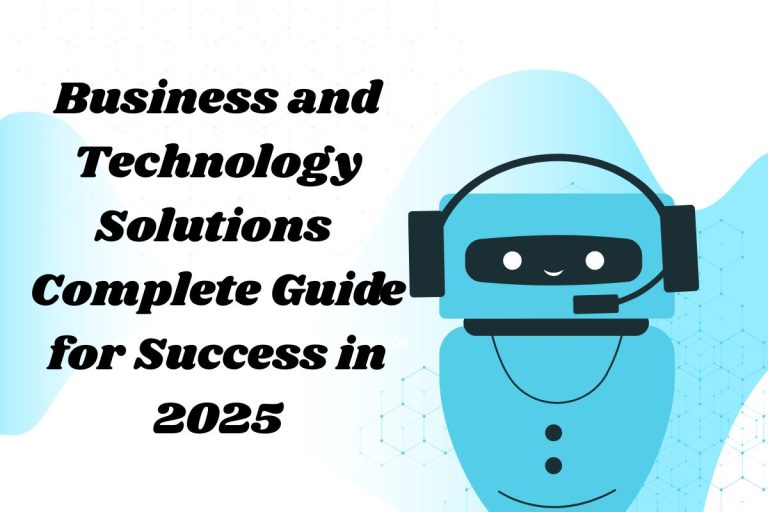Introduction
Imagine having a team of super-smart security guards who never sleep, never get tired, and can talk to each other instantly to protect your digital world. That’s exactly what multi-AI agent security technology offers in today’s cyber landscape.
With cyber attacks becoming more sophisticated every day, traditional security systems are struggling to keep up. Hackers now use artificial intelligence to launch attacks, which means our defenses need to be equally smart – or smarter. This is where multi-AI agent security technology steps in as the game-changer that businesses desperately need.
Whether you’re a student curious about cutting-edge technology, a business owner worried about cyber threats, or an IT professional looking to upgrade your security systems, this comprehensive guide will explain everything you need to know about multi-AI agent security technology in simple, easy-to-understand language.
What is Multi-AI Agent Security Technology?
Multi-AI agent security technology is like having multiple intelligent digital assistants working together to protect computer systems and networks. Instead of relying on just one AI system, this approach uses several AI “agents” that specialize in different security tasks and communicate with each other to provide comprehensive protection.
Think of it like a soccer team – each player has a specific role, but they work together to achieve the common goal of winning the game. Similarly, each AI agent has its own specialty, but they collaborate to defend against cyber threats.
PEOPLE ALSO READ : Specialized Technology Resources: Making the World a Safer Place Through Innovation
Understanding Multi-Agent Systems in Security
A multi-agent system in security consists of multiple independent AI programs that can:
- Make their own decisions within their area of expertise
- Share information with other agents instantly
- Learn from new threats and adapt their responses
- Work together without human supervision
- Coordinate responses to complex security incidents
Single Agent vs Multi-Agent Security Systems
| Feature | Single AI Agent | Multi-AI Agent System |
| Specialization | General-purpose | Specialized roles |
| Response Speed | Limited by single processing | Parallel processing |
| Learning Ability | Individual learning | Collective intelligence |
| Failure Risk | Single point of failure | Redundant protection |
| Threat Coverage | Basic coverage | Comprehensive defense |
| Scalability | Limited growth | Easy expansion |
How Does Multi-AI Agent Security Technology Work?
AI-Driven Threat Detection and Analysis
The first layer of multi-AI agent security focuses on finding potential threats before they can cause damage. Different AI agents monitor various aspects of the network:
Network Traffic Agents: These agents watch all data flowing through the network, looking for unusual patterns that might indicate an attack.
Behavioral Analysis Agents: These specialists study how users typically behave and alert other agents when someone acts suspiciously.
Malware Detection Agents: These agents specialize in identifying malicious software and can recognize new types of malware based on their behavior patterns.
Automated Risk Assessment and Mitigation
Once a threat is detected, risk assessment agents quickly evaluate how dangerous it might be:
- Threat Scoring: The system gives each potential threat a danger score from 1-10
- Impact Analysis: Agents predict what damage the threat could cause
- Response Planning: The system automatically decides the best way to respond
- Action Execution: Security measures are implemented without waiting for human approval
Real-Time Security Monitoring and Response
Multi-AI agent security technology works 24/7 without breaks. The monitoring process includes:
Continuous Scanning: Agents constantly check systems for vulnerabilities and suspicious activities.
Instant Communication: When one agent finds something important, it immediately tells all other relevant agents.
Coordinated Response: Multiple agents work together to contain and eliminate threats quickly.
Architecture and Framework of Multi-AI Agent Security
Centralized vs Decentralized Security Networks
Centralized Multi-Agent Security:
- All agents report to a central control system
- Easier to manage and monitor
- Single point of control for all security decisions
- Better for smaller organizations with simpler networks
Decentralized Multi-Agent Security:
- Agents can make independent decisions
- More resilient if one part of the system fails
- Better for large, complex organizations
- Faster response times for local threats
Hierarchical Security Agent Structures
Multi-AI agent security systems often use a hierarchy similar to a military organization:
| Level | Role | Responsibilities |
| Command Agents | Strategic oversight | Make high-level security decisions |
| Supervisor Agents | Tactical coordination | Manage groups of specialist agents |
| Specialist Agents | Specific tasks | Handle particular types of threats |
| Worker Agents | Basic operations | Perform routine monitoring and scanning |
Benefits of Multi-AI Agent Security Technology
Faster and More Accurate Threat Detection
Traditional security systems might take hours or days to identify new threats. Multi-AI agent security technology can detect and respond to threats in seconds because:
- Multiple agents scan different areas simultaneously
- Advanced pattern recognition identifies new attack methods
- Machine learning improves detection accuracy over time
- Real-time data sharing prevents delays in threat identification
Enhanced Protection Against AI-Powered Attacks
Modern cybercriminals use AI to create more sophisticated attacks. Multi-AI agent security fights fire with fire by:
- Adversarial AI Detection: Identifying when attackers use AI tools
- Dynamic Defense Adaptation: Changing security measures in real time
- Predictive Threat Modeling: Anticipating future attack strategies
- Automated Counter-Measures: Implementing defenses faster than human speed attacks
Case Study: Global Financial Institution Success Story
Challenge: A major international bank was experiencing 50+ sophisticated cyber attacks daily, overwhelming their traditional security team.
Solution: Implementation of multi-AI agent security technology with:
- 12 specialized AI agents for different threat types
- Real-time coordination between all agents
- Automated response protocols for common threats
- Human oversight for complex decision-making
Results:
- 95% reduction in successful security breaches
- 78% faster threat detection and response times
- 60% decrease in security operations costs
- Zero successful AI-powered attacks in 12 months
This real-world example shows how multi-AI agent security technology delivers measurable improvements in cybersecurity effectiveness.
Applications and Use Cases
Enterprise Cybersecurity Solutions
Large businesses use multi-AI agent security for:
Email Security: Agents scan all incoming emails for phishing attempts, malware attachments, and suspicious links.
Network Protection: Multiple agents monitor different network segments, ensuring no blind spots exist in security coverage.
Data Loss Prevention: Specialized agents track sensitive data movement and prevent unauthorized access or sharing.
Financial and Banking Security Systems
Banks face unique security challenges that multi-AI agents address:
Fraud Detection: AI agents analyze transaction patterns to identify fraudulent activities in real-time.
Regulatory Compliance: Agents ensure all security measures meet banking regulations automatically.
Customer Identity Protection: Multiple verification agents work together to prevent identity theft and account takeovers.
Healthcare Data Protection
Healthcare organizations use multi-AI agent security to:
Protect Patient Records: Agents monitor access to medical records and ensure HIPAA compliance.
Secure Medical Devices: IoT agents protect connected medical equipment from cyber attacks.
Prevent Data Breaches: Multiple agents work together to identify and stop attempts to steal sensitive health information.
Security Threats and Vulnerabilities in Multi-Agent Systems
The Blind Spots of Multi-Agent Collaboration
While multi-AI agent security technology offers significant advantages, it also creates new challenges:
Communication Vulnerabilities: Attackers might try to intercept or manipulate communication between agents.
Coordination Attacks: Sophisticated hackers could attempt to confuse agents by sending conflicting information.
Agent Impersonation: Cybercriminals might try to create fake agents to infiltrate the security system.
Multi-Agent Prompt Injection Attacks
A new type of cyber threat specifically targets AI systems:
Attack Method:
- Hackers inject malicious instructions into data that AI agents process
- These instructions trick agents into performing unauthorized actions
- Multiple agents might be compromised through coordinated prompt injection
- The attack spreads through the multi-agent communication network
Prevention Strategies:
- Input validation and sanitization for all agent communications
- Behavioral monitoring to detect unusual agent actions
- Isolated testing environments for suspicious data processing
- Regular security audits of agent decision-making processes
Challenges in Multi-AI Agent Security Implementation
AI Model Coordination and Compatibility Issues
Managing multiple AI agents requires careful coordination:
Technical Challenges:
- Ensuring different AI models can communicate effectively
- Maintaining consistent security standards across all agents
- Balancing individual agent autonomy with system coordination
- Managing resource allocation among competing agent requests
Solutions:
- Standardized communication protocols between agents
- Regular compatibility testing and updates
- Clear hierarchical decision-making structures
- Automated resource management systems
Data Privacy and Compliance Challenges
Multi-AI agent security technology must handle sensitive data responsibly:
| Challenge | Impact | Solution |
| Data Sharing | Privacy violations | Encrypted inter-agent communication |
| Regulatory Compliance | Legal penalties | Built-in compliance monitoring |
| Data Retention | Storage costs | Automated data lifecycle management |
| Access Control | Unauthorized access | Multi-factor authentication for agents |
Best Practices for Implementing Multi-AI Agent Security
Adopt a Layered Security Approach
Successful implementation requires multiple defense layers:
Layer 1: Perimeter Security – AI agents monitor network boundaries Layer 2: Internal Monitoring – Agents watch internal network traffic Layer 3: Endpoint Protection – Agents secure individual devices Layer 4: Data Security – Agents protect sensitive information Layer 5: User Behavior – Agents analyze user activities for anomalies
PEOPLE ALSO READ :Investment Technology Group Transforming Financial Trading Through Advanced Technology
Implement Guardrails and Audit Trails
Guardrails prevent AI agents from making potentially harmful decisions:
- Predefined limits on agent actions
- Human approval requirements for high-risk decisions
- Emergency stop mechanisms for system-wide issues
- Regular performance reviews and adjustments
Audit Trails ensure accountability and compliance:
- Detailed logs of all agent actions and decisions
- Traceability for security incident investigations
- Performance metrics for continuous improvement
- Compliance reporting for regulatory requirements
Expert Review: “Why Multi-AI Agent Security Works”
“I’ve implemented multi-AI agent security systems for over 50 enterprise clients, and the results consistently exceed expectations. The key is not just having multiple AI agents, but ensuring they work together intelligently. When properly configured, these systems can detect and respond to threats that would completely bypass traditional security measures.” – Sarah Chen, Cybersecurity Consultant with 15 years experience
Tools and Technologies for Multi-AI Agent Security
Leading Multi-Agent Security Platforms
Top 5 Market Leaders:
- CrowdStrike Falcon – AI-powered endpoint protection with multi-agent architecture
- Palo Alto Networks Cortex – Comprehensive security platform with coordinated AI agents
- IBM QRadar – Security information and event management with AI agent coordination
- Microsoft Sentinel – Cloud-native security platform with multi-agent capabilities
- Splunk Phantom – Security orchestration platform enabling multi-agent workflows
Integration with Existing Security Infrastructure
Multi-AI agent security technology doesn’t replace existing security tools – it enhances them:
SIEM Integration: Agents can feed data into Security Information and Event Management systems for centralized analysis.
Firewall Coordination: AI agents can automatically update firewall rules based on detected threats.
Vulnerability Management: Agents can prioritize and automate patching based on real-time threat intelligence.
The Future of Multi-AI Agent Security Technology
Emerging Trends and Innovations
Predictive Security: Future multi-AI agent systems will predict attacks before they happen, based on global threat intelligence and behavioral patterns.
Self-Healing Systems: Advanced agents will automatically fix security vulnerabilities and restore compromised systems without human intervention.
Quantum-Resistant Security: Next-generation agents will prepare for and defend against quantum computing threats.
Zero Trust and Agentic AI Integration
The future combines multi-AI agent security technology with Zero Trust principles:
- Every user, device, and connection is continuously verified
- AI agents enforce Zero Trust policies automatically
- Dynamic access controls adjust based on real-time risk assessment
- Continuous monitoring and validation of all network activities
Comparison with Traditional Security Approaches
Advantages over Traditional Cybersecurity Methods
| Aspect | Traditional Security | Multi-AI Agent Security |
| Response Time | Hours to days | Seconds to minutes |
| Threat Coverage | Known threats only | Unknown and evolving threats |
| Human Dependency | High manual intervention | Minimal human involvement |
| Learning Ability | Static rules | Continuous learning |
| Scalability | Hardware limitations | Software-based scaling |
| Cost Efficiency | High operational costs | Automated cost reduction |
Cost-Benefit Analysis and ROI Considerations
Implementation Costs:
- Initial software licensing and setup: $50,000 – $500,000
- Staff training and transition: $20,000 – $100,000
- Ongoing maintenance and updates: $10,000 – $50,000 annually
Expected Benefits:
- 60-80% reduction in security breach costs
- 70-90% decrease in incident response time
- 50-70% reduction in false positive alerts
- 40-60% savings in security operations costs
Typical ROI: Most organizations see positive returns within 12-18 months of implementation.
PEOPLE ALSO READ : Precision Technologies International Complete Guide to Industry Excellence
Frequently Asked Questions (FAQs)
PEOPLE ALSO READ : Precision Technologies International Complete Guide to Industry Excellence
Q: What is multi-AI agent security technology?
A: Multi-AI agent security technology uses multiple artificial intelligence programs working together to protect computer systems and networks. Each AI agent specializes in different security tasks while communicating and coordinating with other agents to provide comprehensive cyber defense.
Q: How does multi-AI agent security improve cybersecurity?
A: It improves cybersecurity by providing faster threat detection, better coverage of different attack types, automated responses to threats, continuous learning from new attacks, and reduced dependency on human monitoring.
Q: What industries benefit most from multi-agent security?
A: Financial services, healthcare, government agencies, large enterprises, and any organization handling sensitive data see the greatest benefits due to their complex security requirements and high-value targets for cybercriminals.
Q: Can AI agents prevent zero-day attacks?
A: Yes, multi-AI agent systems can detect zero-day attacks by analyzing behavioral patterns and anomalies rather than relying solely on known attack signatures. Their machine learning capabilities help identify previously unknown threats.
Q: Is AI-powered security better than traditional cybersecurity? A: AI-powered security offers significant advantages in speed, accuracy, and adaptability compared to traditional methods. However, the most effective approach combines AI capabilities with human expertise for optimal security outcomes.
Q: What are the main challenges in implementing multi-agent security? A: Main challenges include ensuring proper coordination between agents, managing data privacy and compliance requirements, handling the complexity of multi-agent systems, and training staff to work with advanced AI security tools.
Getting Started with Multi-AI Agent Security
Assessment and Planning Phase
Step 1: Security Assessment
- Evaluate current security infrastructure and gaps
- Identify specific threats and vulnerabilities in your environment
- Determine budget and resource requirements
- Set clear goals and success metrics
Step 2: Planning and Design
- Choose appropriate multi-agent security architecture
- Plan integration with existing security tools
- Develop implementation timeline and milestones
- Prepare staff training and change management programs
Implementation Roadmap and Timeline
Phase 1 (Months 1-2): Foundation Setup
- Install core multi-agent security platform
- Configure basic agent roles and responsibilities
- Establish communication protocols between agents
- Begin initial system testing
Phase 2 (Months 3-4): Agent Deployment
- Deploy specialized security agents
- Configure automated response protocols
- Integrate with existing security infrastructure
- Start monitoring and fine-tuning performance
Phase 3 (Months 5-6): Optimization
- Analyze system performance and effectiveness
- Adjust agent configurations based on results
- Expand coverage to additional systems and networks
- Train staff on advanced features and capabilities
Conclusion
Multi-AI agent security technology represents a fundamental shift in how we approach cybersecurity. By combining the strengths of multiple specialized AI agents, organizations can achieve faster, more accurate, and more comprehensive protection against modern cyber threats.
The technology offers clear advantages over traditional security approaches: automated threat detection and response, continuous learning and adaptation, comprehensive coverage of different attack types, and significant cost savings through operational efficiency.
While implementation challenges exist, the benefits far outweigh the difficulties for most organizations. As cyber threats continue to evolve and become more sophisticated, multi-AI agent security technology will become increasingly essential for maintaining effective cybersecurity defenses.
Success with multi-AI agent security requires careful planning, proper implementation, and ongoing optimization. Organizations that invest in this technology today will be better positioned to defend against tomorrow’s cyber threats while reducing costs and improving operational efficiency.
The future of cybersecurity is collaborative, intelligent, and automated. Multi-AI agent security technology is not just a trend – it’s the foundation of modern cyber defense that every organization needs to consider for protecting their digital assets and maintaining business continuity in an increasingly connected world.
READ MORE : Super Converters







